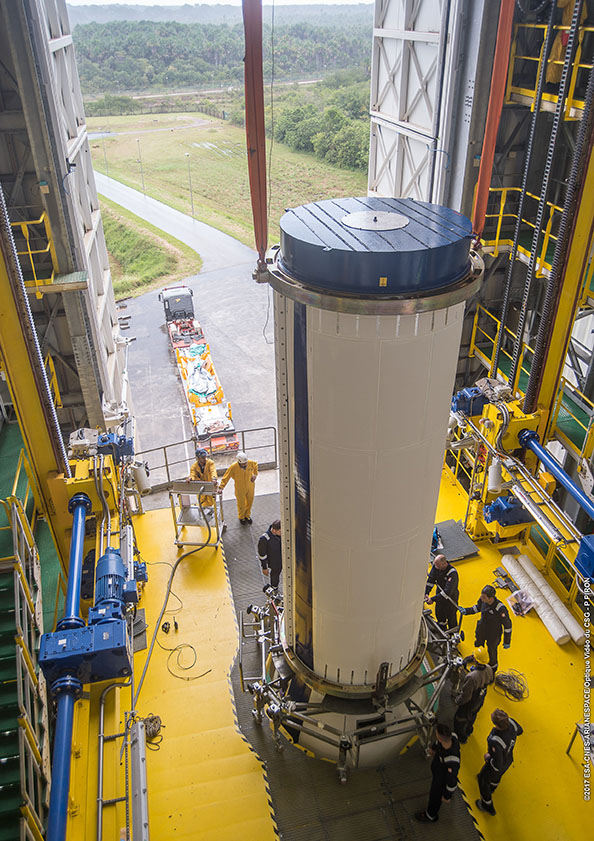The lightweight Vega launcher is scheduled for lift-off on 1st August carrying two Israeli-built Earth observation satellites.
The lightweight Vega launcher is set to launch a dual payload of Earth observation satellites – consisting of OPTSAT-3000 (as the upper passenger) and Venµs (in the lower passenger position).
The mission, scheduled for lift-off on 1st August, is designated Flight VV10 by Arianespace. It will mark Vega’s 10th launch since the 2012 start of operations with this vehicle – all of which have been successfully performed from French Guiana. The most recent Vega mission orbited Sentinel-2B in March.
Vega is the smallest member of the Arianespace launcher family operated at the Spaceport. It complements the company’s medium-lift Soyuz and heavyweight Ariane 5.
Both satellite passengers on Flight VV10 – Venµs, developed in a joint project of the Israel Space Agency (ISA) and the French CNES space agency, along with OPTSAT-3000 for the Italian Ministry of Defense – will be delivered by Vega to Sun-synchronous orbits.
Venµs (for Vegetation and Environment on a New MicroSatellite) is designed to provide close-up and regular monitoring of vegetation on Earth’s surface. By observing plant growth and health status, the spacecraft will help scientists to determine the impacts of environmental factors, human activities and climate change on Earth’s land surfaces.
To fulfil its scientific objectives, Venµs will acquire frequent, high-resolution, multi-spectral images of over 100 sites of interest around the world. Capturing these images will be this spacecraft’s super-spectral camera, which is characterized by 12 narrow spectral bands ranging from 415nm to 910nm.
Venµs — the first Israeli-made satellite created for environmental research purposes —was built by Israel Aerospace Industries’ (IAI) Space Division in collaboration with Elbit, which developed the telescope, and Raphael, providing the propulsion system. The camera was supplied by CNES.
The liftoff mass of Venµs is 264kg. Its scientific mission will be followed by a technological mission at a lowered altitude, which will gauge the performance of IAI-developed Hall-effect thruster technology to counter a satellite’s orbital decay caused by atmospheric drag.
Flight VV10’s other passenger, the OPTSAT-3000 Earth observation satellite, will enable national defense entities to acquire and use high-resolution images from any part of the globe.
The OPTSAT-3000 system was supplied by Telespazio as prime contractor, with responsibility for supply of the entire system: from the satellite to the ground segment, launch and early operation services, the preparation and execution of operations and logistics, through to in-orbit tests and commissioning.
The satellite was built by Israel Aerospace Industries (IAI), chosen by the Italian Ministry of Defence based on inter-governmental Italian-Israeli agreements. OHB Italy is responsible for launch services and related engineering support.
OPTSAT-3000 will have a liftoff mass of 368kg and a design life of seven years.

